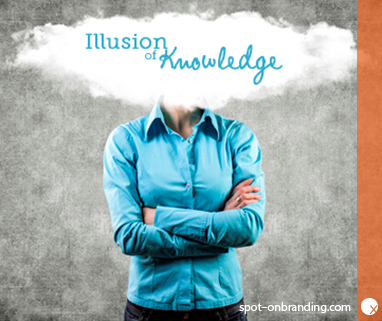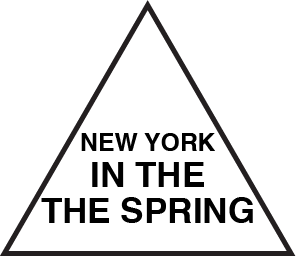
Here’s WHY Your Brain is Preventing You from Reaching Your Customers
Time for a rebrand? Let’s find out…
Draw a bicycle.
Right now. I’ll wait.
How did it turn out? Are you confident that you drew your bicycle correctly? HOW confident?

Did it look something like this?
Not quite? You’re not alone. Turns out, most people have a hard time accurately drawing a bicycle.
Here’s another example…
I recently bought a Mazda Miata (zoom zoom)! Despite the fact that this bestselling, two-seat convertible sports car brand has been around since the late 1980s, I could’ve sworn I’d hardly seen any Miatas on the road…until I purchased one.
Now I see them everywhere! But are there suddenly MORE Miatas on the road now then there was the day before I bought the car? Of course not.
So what’s happening here?
These brain blips are an interesting component of the psychology behind branding: We Don’t Know How Much We Don’t Know. While I’ve heard of this concept before and I’ve definitely seen it in action within myself, it wasn’t until I watched this episode of Brain Games on National Geographic that I began to understand just how deep this concept goes.
What You Dont Know – Brain Games – Episode 09 by TrailerWood
Psychology of Branding Basics: This is Your Brain on Assumptions & Overconfidence
Who likes to walk around feeling lost and clueless, especially when it comes to things “everyone” supposedly knows (like drawing a bicycle, for example)? From a basic survival standpoint, our brains know we need to feel safe and in control. That’s why our brains are wired to provide an answer (ANY answer, even if it’s totally wrong)—because it’s better than not knowing the answer at all. It’s automatic.
Psychologists have a term for this: it’s called the “Illusion of Knowledge.”
As humans, we’re ALL naturally inclined to maintain this illusion that we know all about the world. The Illusion of Knowledge is necessary to keep us from facing our own incompetence. The Illusion of Knowledge brings about a false sense of security in what we think we know. The Illusion of Knowledge is what leads us to make daily decisions with overconfidence.
Kinda scary, isn’t it? Millions of people thinking they 100% KNOW the answer means we have a bunch of Homer Simpsons running around thinking they’re Sherlock Holmes. And worse yet, due to the “Overconfidence Effect,” our brains spend a lot of time protecting our fragile little egos. Great.
A Quick New York Brain Game
National Geographic’s Brain Games offers a lot of cool quizzes to help illustrate this raging battle in our brains. I found this one illustrates my points best…
Read this phrase:

Now read it again, out loud.
Did it make sense? Yes? Then read it again.
…how about now? Did you see it?
If not, no worries; most people don’t see it on the first try. (To my husband’s amazement, I saw it immediately, because hey, attention to detail is my MO.)
Your eyes don’t focus on every single word when you read. Instead, you sweep across the page sampling small chunks of text—leaving it up to your brain to make sense of those chunks. (You’re probably doing the same thing while reading this article right now because it looked too long to commit to, right?) A simple task like reading shows how much your brain takes in and tosses out with next to zero conscious awareness on your part.
(You do see it now, right? New York in THE THE spring. Two THEs!)
What’s Really Up with the Psychology of Brand Identity Problems

This is your customer’s brain on brands. Where do you fit in?
(Photo credit: Pixabay user johnhain – licensed for use under CC Public Domain license.)
Your brain is constantly trying to leave you with as little information as necessary to make sense of your world. While you might get the sense you’re taking in the entire scene, you’re really not. Your brain doesn’t always give you the full picture. Same goes for your customer’s brain.
But how can you get your potential customers to GET your business, your products and your services? After all, they already think they know everything. They’re making assumptions about your business from the get-go. Worse yet, they’re not retaining any relevant information about your brand!
NEWSFLASH: It’s NOT your potential customers’ fault!
If you’re struggling to determine WHY your customers aren’t remembering, recognizing, understanding or feeling affinity for your brand, it’s time to turn the tables and take a look at your OWN assumptions and overconfidence. Seriously!
Branding Beyond Our Pesky Brains
Here’s the deal: YOU, as business owner, already have certain assumptions about your company, your branding, and your products and services. The trick is to look at your own branding differently so you can stop making assumptions about your branding and start actually reaching your customers.
Here’s HOW…
Play It Again…with FEELING
How does your brand make your customers feel? [Pro tip: If you don’t know, you need to ASK your current customers.]
Want to use brand awareness and brand recognition psychology to get customers in the door, then keep them? Start with feeling. Think about it: You can talk all day long, yet most people only remember a few words from your most recent interaction. What they do remember, almost without exception, is how that interaction made them FEEL.
The psychology of branding operates the same way. WHY? Because your customers are people. Branding is a people problem. When we really look at people at their core to understand how they act singularly (psychology) and en masse (sociology), that’s when our branding works and our brands become successful.
To compete, you need to:
- Feel strongly about something,
- Stand for it, and
- Solve it.
The passion behind your message is the spark you’ll ignite in your customers. If you’re not hitting the mark, you may be either: 1.) Not passionate enough about your mission and vision, 2.) Not passionate about solving the right problem—the problem your target market actually cares about, and/or 3.) You are passionate about a shared vision with your audience, but your branding is ineffective.
Once you nail down that passionate messaging, great branding (consistency and repetition of that same message plus the right look and FEEL) is the recipe for getting those prospects in the door. After that, it’s the brand experience (again, this is about the FEELING) that keeps your customers coming back for more.
Get Relevant
I never noticed all those other little Miatas on the road, even though they were there the whole time. They were effectively invisible to my mind until I became aware of their existence, hence giving them relevance. As a result, POP! Like magic, that car is frickin’ everywhere now!
A brand’s message operates exactly the same way. Until your brand’s existence is relevant to a person’s world, you don’t exist. Their brain blocks your brand from their view. Without this filtration, we’d all go insane or never remember to pick up the kids from school or brush our teeth!
How do you go POP in your customer’s mind? Become more relevant.
If you’re still not reaching your prospects, it’s time to poll your best customers. What do they like about your brand (logo, colors, voice, look & feel, etc.)? What are they drawn to? What don’t they “get”? What misconceptions do they have about your brand?
A little brand questionnaire—questions to ask to become more relevant:
- What do really you offer your customers? Yes, you sell a product or service, but what problem are you helping your customers solve? Do your products and services help your customers save time or money? How do you make your customers’ lives easier?
- What are your prospects’ greatest fears and happiest dreams? Do you relieve their pain, cause them joy, make them feel satisfied? How do you want to make your customers feel?
- Why should your customers care about what you do? Why don’t they?
- What does your competition offer these same customers? What do you do better and why? Why does your target market sometimes prefer your competitor over you?
Write out the answers to your questions. Talk to your customers. Talk to your employees and professional colleagues. Get down and dirty. To be successful, you need to “trick” your brain into thinking about your business differently—and the best way to do this is to enlist other brains to help. You’re simply too familiar with your brand to do this on your own.
While you don’t have to be a psychologist to understand the psychology of branding and marketing, by definition, we have to take our own “crazy” human brains into account. It’s all about getting to the heart of what you do, then showing that to that world in a passionate and relevant way. That’s what a great brand does.
It’s time to take a step back from your brand (and your brain) to see the bigger picture.
“The greatest enemy of knowledge is not ignorance; it is the illusion of knowledge.” – Stephen Hawking
This post originally appeared 6/18/2013 and has been updated since.
Branding not working? Need a fresh look at your brand? Outside eyes can help you reach your customers more effectively by getting a Brand Audit. A Brand Audit is the best way to assess your current branding effectiveness or if you should consider rebranding.
 |
Nora D. Richardson is the CEO and Branding Expert at Spot-On Branding, a full-service branding agency in Charlotte, North Carolina and Charleston, South Carolina. Spot-On Branding helps CEOs understand the psychology of branding, including color psychology, brand recognition and awareness, and more—to better optimize their logo, business cards, website, and overall brand identity. |
